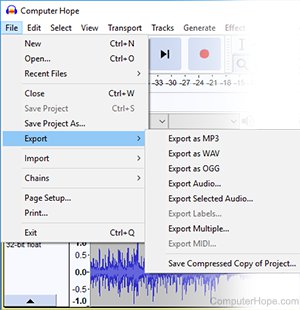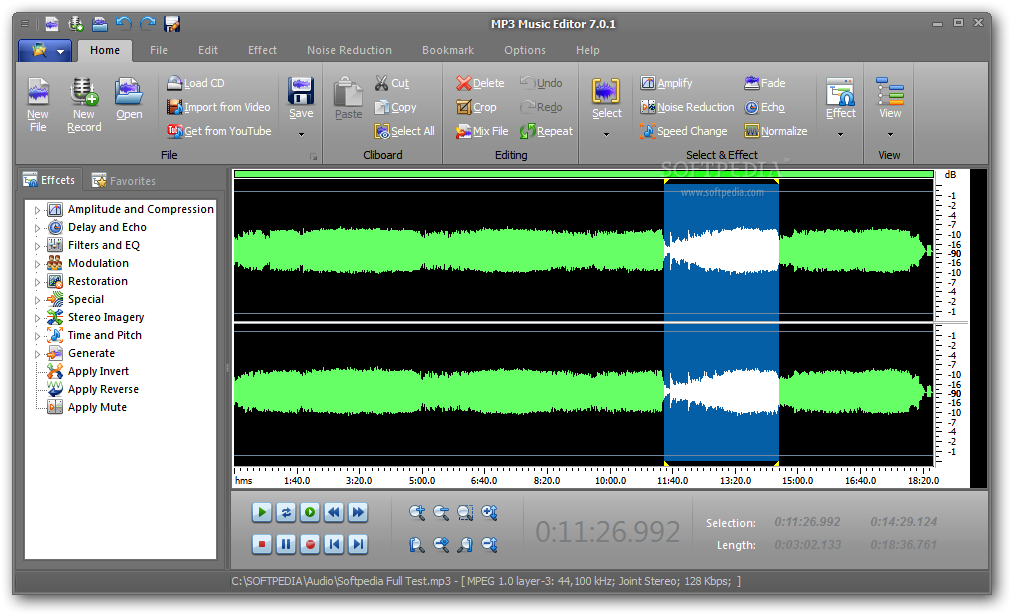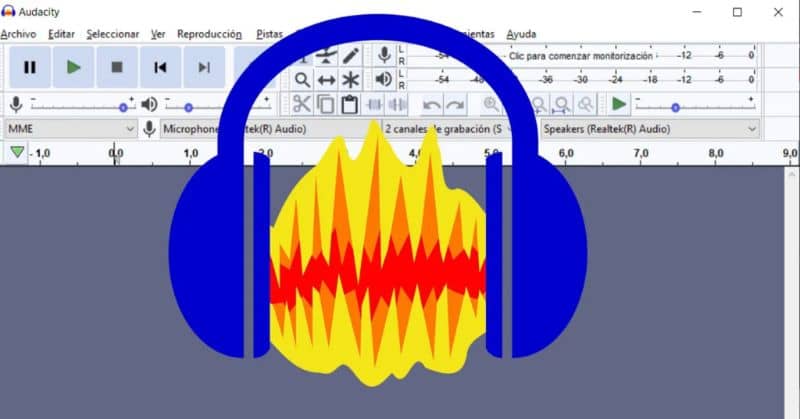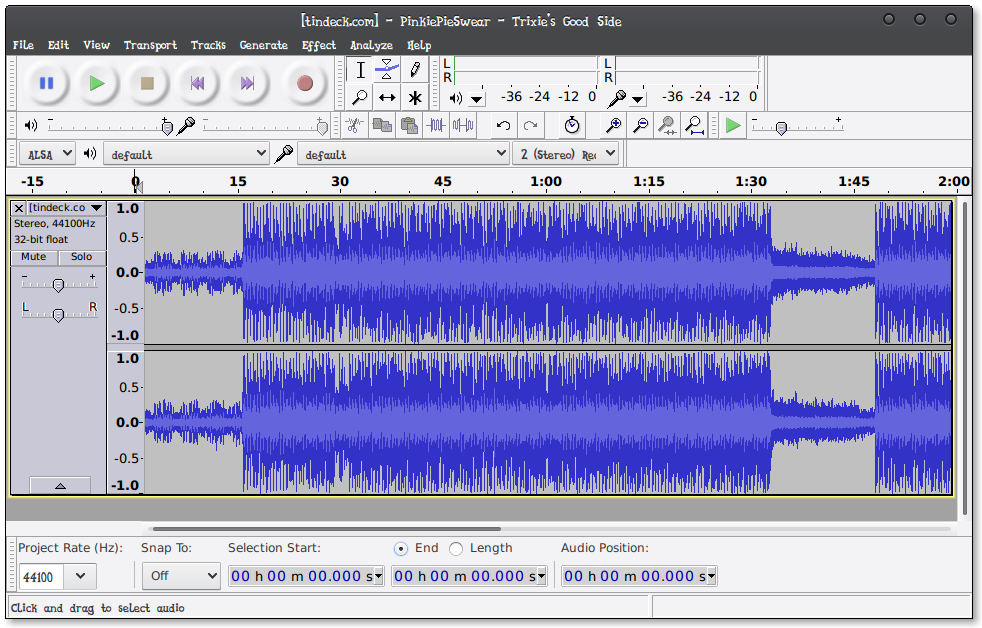Audacity is an open source, cross-platform audio editor and recorder. Audacity can record and play sounds and import and export WAV, AIFF, MP3, and OGG files. Welcome to Audacity Audacity® is free, open source, cross-platform audio software for multi-track recording and editing. Audacity is available for Windows®, Mac®, GNU/Linux® and other operating systems. Check our feature list, Wiki and Forum. Download Audacity 2.1.3 Mar 17th, 2017: Audacity. Lame MP3 for Audacity is one of the best free softwares for encoding mp3 files with high quality sound. Fun and easy to use, it's fit for all kinds of sound and music processing, from editing to audio recording. Lame is available for both Windows and Mac. See the Compatibility tablein the Audacity Wiki Read about Audacity on Windows 10, Windows 8, Windows 7. A CPU that supports SSE2 is required (any CPU made after 2003 should support this). Please use the legacy Audacity 2.0.6 versionif your machine lacks SSE2 support. The values in the recommended RAM/processor speed column below are for tasks like recording for an hour, or editing three 20-min.
Audacity is an open source software for manipulating audio. The following are few important features of audacity:
- Record live audio
- Playback recorded audio/sound files
- Edit sound files by cut, copy & paste.
- Convert audio from one format to another
Apart from Linux you can also install Audacity on Windows and Mac OS X.
This article explains few essentials features of audacity with screenshots.
1. Install Audacity Tool
On Linux, use appropriate package management tool to install Audacity. For example, on Ubuntu, use apt-get or aptitude tool as shown below.
For windows, after downloading executable from here, click on the exe to install it,
2. Record Audio from Microphone and Playback
In Audacity, toolbar contains buttons like Pause, Playback, Stop, Skip to begin, Skip to End, Record.
As you can imagine, the basics are very straight forward; to start the recording, press the record button, which will activate your system’s microphone and start recording. While recording, you can also pause in-between, and finally press the stop button to stop recording. When it is recording, it will also display the audio waves based on the input voice. We can manipulate these audio waves to edit the audio files.
To change between Mono and Stereo channels, go to Edit -> Preferences -> Devices and then change Channels value.
3. Manipulate Audio Tracks by CUT, COPY and PASTE
Audacity Mp3 Export
In your audio tracks, the unwanted portion of voices can be deleted by selecting it with mouse and pressing delete button in keyboard.

Audacity Mp3 Decoding Failed

If there is a need to repeat a specific portion of voice tracks in some other places on this audio track, you can use simple copy/paste for this purpose.


Just like you can imagine, use your mouse to select a portion of the track that needs to be copied and press Ctrl + C. Paste this by placing cursor at a specific location on the track and press Ctrl + V.
4. Adjust Audio Peaks
The audio peaks in voice tracks can be reduced by adjusting the amplification in places where its required.
Select the portion of audio peak tracks, and click on Effect -> Amplification. In the amplification window enter negative value to reduce amplification.
Positive or negative amplification can be applied on selected tracks. If peaks are to be reduced, then apply negative amplification, at first try with value 2 and keep increase it until the voice gets proper.
The following shows the effect on the audio wave before and after changing the amplification settings.
Please remember that you can freely play around on audio tracks as always the undo option is available by pressing Ctrl+Z keys.
5. Remove Noise from Audio Tracks
During the playback of an audio file, if you find background noise, it can be removed using Noise Removal feature.

Select the portion in the track where you like to remove the noise. In this example, we’ll selecting from the beginning of the track.
Click menu Effect -> Noise removal,
As seen above, open Noise Removal after selecting the noisy portion. Those noises can be reduced/removed by adjusting values (increase Noise reduction and Sensitivity) in “Noise removal” feature such noise reduction and sensitivity values.
The following audio wave shows how it looks like after removing the noise.
Play around with the value and adjust it until you feel that the noise is removed completely.
6. Record Audio Files as MP3 files
MP3 format is a compressed audio format. Audacity supports exporting audio files as MP3.
The pre-requisite is that the plugin “Lame” needs to be installed, and then the installed path has to be located by audacity by following below steps.
For Windows, download the LAME plugin from here, and install it.
From Audacity, click on Edit -> Preferences -> Libraries, click on button “Locate” nearby MP3 library text. Just cross check that the path shown here is the installed path of LAME and click ok.
After this, to save recorded audio in MP3 format, click File -> Export, which will give the option to save the file in MP3 format.
